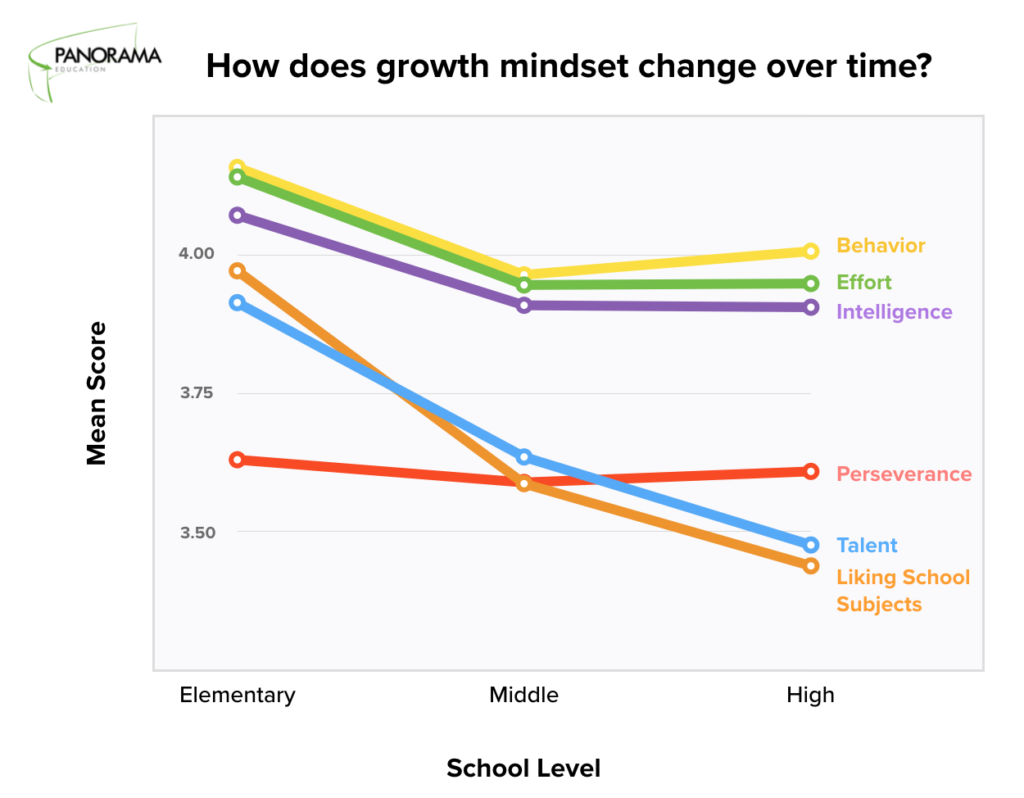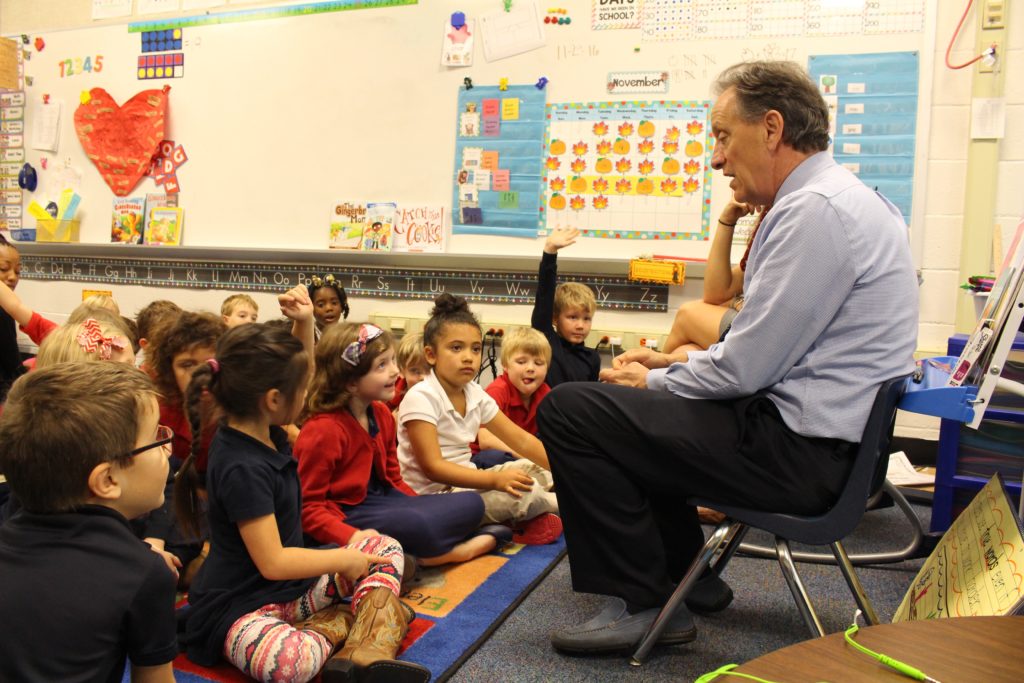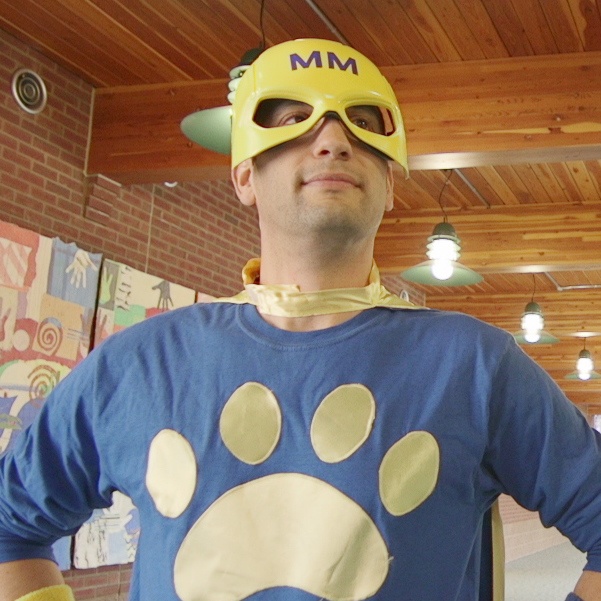Today, schools and districts are making life skills a priority, and with good reason. Research shows that educators play a profound role in promoting students’ life skills.
But what if students have greater confidence that they can improve than their teachers? That’s one of the surprises we found in our recent survey of more than 2,400 teachers and 36,000 students.
In Panorama’s surveys conducted during the 2016-2017 school year in 68 schools, we asked teachers several questions about how possible it is for their students to change various qualities about themselves.
- How possible is it for your students to change their intelligence?
- How possible is it for your students to change how well they behave in class?
We then compared teachers’ results with those from their students on analogous versions of these same survey questions.
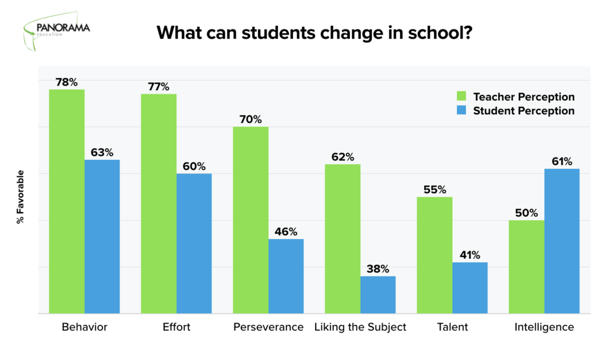
First we found that teachers tended to view their students’ qualities as being easier to change than students themselves do. On average, teachers responded 14 percentage points higher on questions about growth mindset than students. While both groups viewed behavior and effort as the easiest for students to change in school, they disagreed sharply on how much students could change how easily they give up (perseverance) and their interest in school subjects.
The only quality that students rated as being easier to change was their intelligence. In 91 percent of the schools we studied, students rated their intelligence as more malleable than their teachers did.
These data reveal diverging points of view between teachers and students. Teachers tend to think that their students can easily change how hard they work and their academic interests—“If you work hard and give algebra a chance, you will come to really like it”—while students tend to think otherwise—“I can get smarter, but I’ll just never be a math person.”
To Kimberly Wynne, Assistant Superintendent in Farmington Public Schools (CT), whose school system has placed a human emphasis on growth mindset, the data are not surprising: “Attitude alone will not change outcomes. Even teachers who encourage students to try harder may end up being reinforced in their beliefs that intelligence is fixed. We have found that the real key to changing a student's mindset is to couple beliefs with strategies.”
"We have found that the real key to changing a student's mindset is to couple beliefs with strategies."
In other words, Wynne explains, “teachers who say, ‘not yet’ when a student is struggling, and then support with specific strategies for learning, have a greater impact on developing growth mindset than teachers who simply say, ‘Try again. Try harder. You can do it.’ We need more than cheerleaders. We need teachers who believe that all students can succeed and then teach students strategies for self-directed learning that work.”
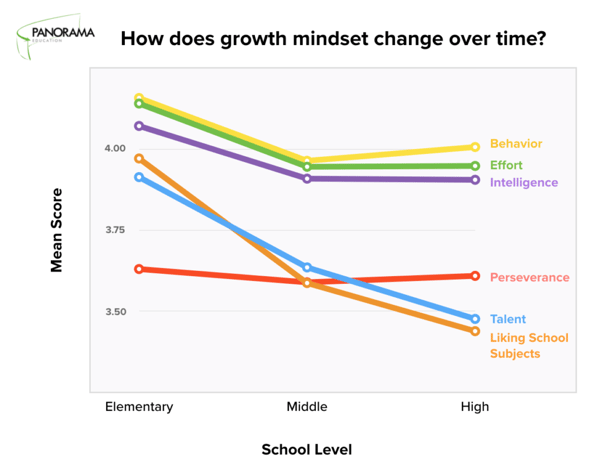 

We also looked at how students’ perceptions of their growth mindset changed across school levels. When we examined responses from elementary, middle and high school students, we found that students’ favorable views decreased as they grew older and progressed through school. This decline was most noticeable in students’ views about their talent and academic interests.
Sixty-nine percent of elementary school students reported that they can change how much they like their school subjects, yet only 53 percent of high schoolers said the same. Meanwhile, students’ views on other qualities—behavior, effort, perseverance and intelligence—remain relatively constant as they transition from middle to high school.
By mapping students’ views at different points on their road toward graduation, we can start to inform smarter, differentiated interventions that address students’ life skills. These data suggest that what’s appropriate for developing stronger mindsets in elementary school may miss the mark for what’s needed for high schoolers.
What’s next for using growth mindset data?
When students believe they can change their most basic attributes, such as intelligence and self-control, they are more likely to embrace challenges and to achieve at higher levels. The notion of growth mindset has surged in popularity in recent years. In an Education Week survey of teachers, 98 percent believe that growth mindset can help their students learn and nearly as many say it improves the quality of their instruction.
In an article published last year, we shared findings that illustrate how students view their own growth mindset. We found that students’ mindset depends on which aspect of growth mindset they are asked about, such as intelligence, effort, and talent. We also found that boys and girls tend to view their growth mindset differently.
Educators have clearly embraced the importance of growth mindset—most even view fostering students’ mindset as part of their job responsibilities. Now, as schools and districts focus their attention on students' life skills, we have an opportunity to inform curricula, interventions, and support using data. We should look to engage students in this process, and to have meaningful conversations about any differences in perceptions.
It’s our challenge, as educators and leaders, to hold a growth mindset ourselves and about the students we serve.
Special thanks to Won Suh, Sam Moulton, Hunter Gehlbach, and Liz Breese for contributing to the research and writing behind this post.
A version of this post originally ran on EdSurge.



